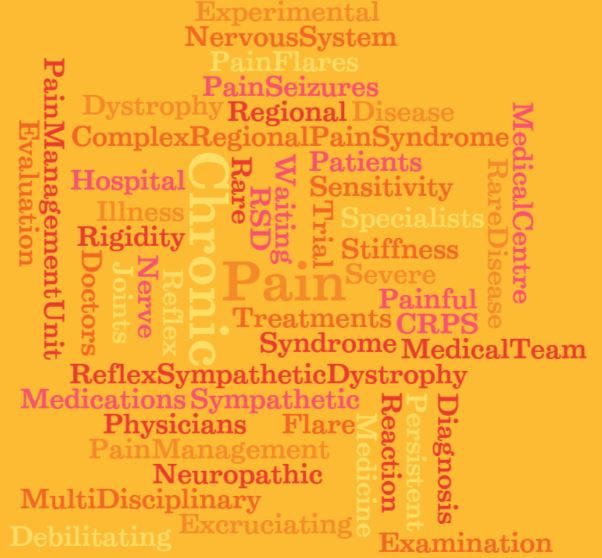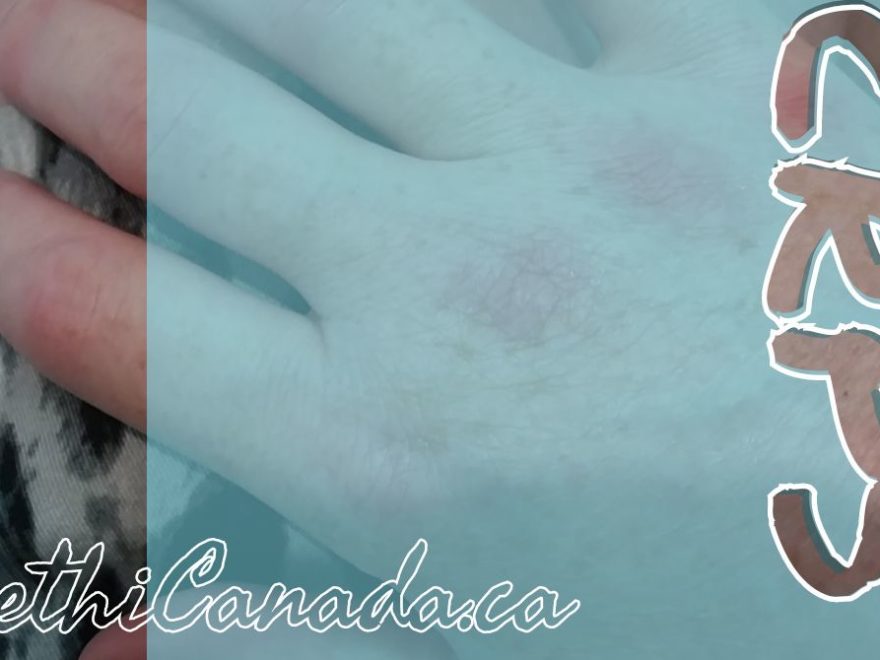Today’s the 3rd annual Color the World Orange Day – to raise awareness for a rare & (usually) invisible disease. This disease is called Complex Regional Pain Syndrome (CRPS). To make things a bit more difficult for this rare disease, the few physicians who know about it still seem to refer to it by its former name; Reflex Sympathetic Dystrophy (RSD).
I’m wearing orange to raise awareness for this disease, because I’ve had it since early March of this year… and getting a diagnosis – and then any type of treatment – was very difficult because: CRPS/RSD is not well recognized in Canada”.(1) In fact:
“Even though some doctors are now diagnosing it sooner, many patients aren’t seen soon enough during the six month window when there is an 80-90% success rate. Others are diagnosed and do not receive the proper treatment.
Why? In medical school, CRPS is not taught. By better educating the medical community on this rare disease, we hope that every newly diagnosed patient will be able to have successful treatment.”(1)

This lack of awareness is really surprising, given that CRPS
is widely considered to be the single worst source of pain – ranking higher on pain scales than childbirth, cancer and amputation.
Yet the condition is rare and can be difficult to recognize.
As a result, patients with CRPS… according to the National Institutes of Health – can search for an average of approximately four years before being properly diagnosed with the condition”.(2)
How painful is it? “Using the McGill Pain Index, many diseases are rated out of 50 on this index. The score for cancer pain is 28 and for RSD/CRPS pain, a whopping 42”.(1)
So, what is CRPS? It’s a rare neuroinflammatory disease – with a probable autoimmune component – which usually affects the limbs. CRPS can also spread, from one limb to another or in some cases to the internal organs. This disease involves(4):
- Central sensitization (changes in the central nervous system)
- Neuropathic pain
- Visceral pain
- Autonomic dysfunctions
- Somatovisceral dysfunctions
- Abnormal motor functions
- Localized vascular breakdown/leakage
- … and more
It has been “classed as the most painful chronic pain condition that is known”, scoring 42 – of a possible 50 – on the validated McGill Pain Index.(4)
And finally, “Due to a lack of information on the pathophysiology of CRPS and the similar absence of consistent objective diagnostic criteria, clinical trials that demonstrate effective therapies are difficult to perform”(5).
References:
(1) https://www.rsdcanada.org/parc/english/parc/aboutus.html
(2) https://www.news-medical.net/news/20160325/CRPS-rank-higher-on-pain-scales-than-childbirth-cancer-amputation.aspx
(3) https://www.ncbi.nlm.nih.gov/pmc/articles/PMC3661922/
(4) http://www.burningnightscrps.org/sufferers/pain-scale/
(5) https://emedicine.medscape.com/article/1145318-treatment#d5
For information about the 2016 edition of CRPS awareness day, named “Colour the World Orange”, please visit the website:
https://rsds.org/color-the-world-orange-2016/


